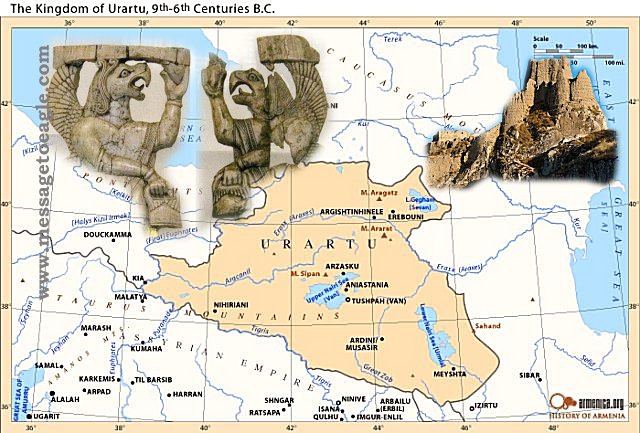MessageToEagle.com – The lost kingdom of Urartu is shrouded in mystery. Urartian artifacts created in this ancient region are puzzling, like for example the winged faceless sphinx or plate of the gods holding an unknown object in their hands.
Very little is known about this ancient place and the origins of its people.
Who were they? Where did they come from?
Still only a third to a half of the 300 known Urartian sites in Turkey, Iran, Iraq, and Armenia have been excavated. At the same time, the prehistoric Urartian legacy is not satisfatorily protected from plundering by treasure-hunters.

The kingdom’s beginnings are lost in the mists of pre-history, but before it was destroyed, Urartu was situated in Eastern Turkey, Iran and the modern Armenian Republic.
This year’s diggings conducted in the northern side of the Van Castle have unearthed objects that may shed light on social and cultural life of the Urartians.
“The patterns of chariots that were produced 3,000 years ago in the Urartian Kingdom, rare pots and pans from the 15th and 16th centuries, a 5,000-year-old portable oven and 2,700-year-old jewelry have been so far unearthed in the tumulus,” according to a report in Hurriyet Daily News.
Bronze fibulas, a trade mandate and civic settlements of the Urartian public are among this season’s discoveries, according to Istanbul University Van Region History and Archaeology Center Deputy Director Assistant Professor Erkan Konyar.
See also:
Urartu Kingdom’s High-Tech Jewelry As New Today As 3,000 Years Ago
Mysterious Lost Kingdom Of Urartu And Its Enigmatic History
Mythical Temple Of Wingded Warrior God Haldi In The ‘City Of The Raven’
Konyar said that
“…during this season’s works, Urartian houses were found in civic settlements and their architecture structure showed that the houses belonged to the people who were working to meet the needs of the royal people living in the citadels.
“Most of the findings have civic characters. Among the most important findings of this year is a tablet of mandate, which has commercial content. It is about products that were dispatched from here. It is very important to understand commercial relations. Maybe this place was the house of a clerk, and kiln tablets had been written here. It is now being scientifically examined.”
HDN Konyar said most of the excavations on the Urartian era were carried out in castles and revealed the life style of the king. “Not much is known about the civic life in the Urartian era. This is why the excavations in the tumulus are very important.”
He added that inside the Urartian people’s houses they had found ovens and foodstuffs.
“We see that the traditional house culture in Van also existed in the Urartian era. We see the reflections of the Urartians today. Ovens and cellars, which are seen in Van houses today, are also seen in the Urartian houses.
Houses do not have a certain order. They were arranged to meet the needs of the people living there.
Their architecture is different. This is why further excavations are very important.
It was also a surprise for us that the houses were preserved well. Walls still survive. The tumulus will provide us very important data to determine the history of the city,” Konyar said.
MessageToEagle.com







